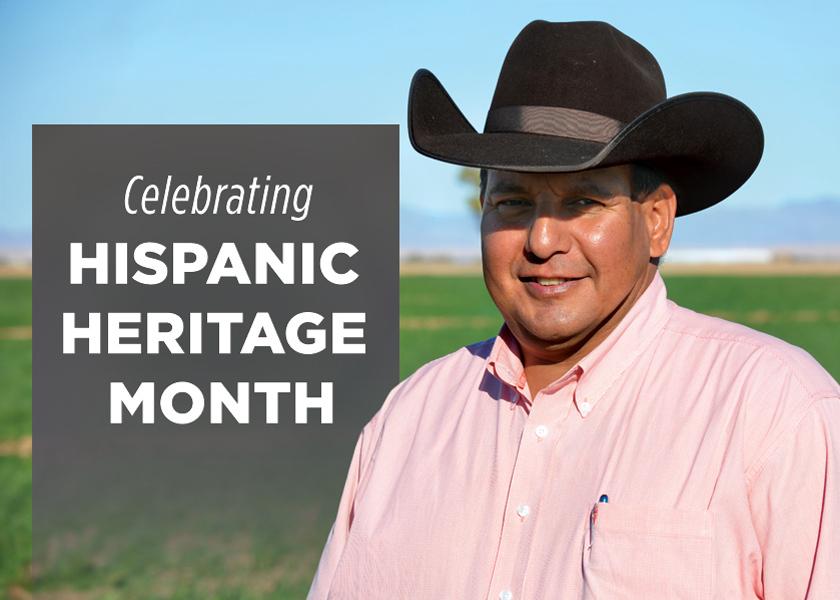Hispanic Farmers and Producers Help Keep Food on America’s Tables

By Jesse Larios
Those of us who work in agriculture talk a lot about our roots. That’s because our land, our families, our heritage and our livelihoods are often tied up together. Across America, farming tends to be a multigenerational business, with families working together to make a living from the land, often against the powerful forces of weather, markets and time.
This month is Hispanic Heritage Month, and it got me thinking about my family’s roots and the contributions that my Latino and Latina brothers and sisters have made to agriculture in the U.S. From the vaquero days of the 1800s, when Hispanic ranchers and horsemen helped build up the American West, to the new generation of tech-savvy producers working at agriculture’s cutting edge today, Hispanic farmers, workers and producers have always been integral to keeping food on America’s tables.
There are over 112,000 Hispanic farmers and producers in the U.S., according to the U.S. Department of Agriculture’s most recent Census of Agriculture – making us the largest group of minority farmers in America. The Hispanic community also plays an outsized role throughout the food and agriculture value chain, as about 80% of farm laborers, 44% of meatpacking workers and a quarter of restaurant and food service employees are Hispanic.
In many cases, Hispanic workers have been vital to keeping our food system running during our country’s darkest hours. At the height of the COVID-19 pandemic, many Latino and Latina essential workers were on the front lines in fields and factories, risking illness or worse so that all Americans could stay fed. Looking further back, when many working-age men went off to fight in World War II, workers from Mexico helped ease U.S. labor shortages in agriculture, harvesting crops that the entire country depended on. Many workers, including my own father, came to this country through the Bracero Program, which lasted from World War II through the 1960s and enabled millions of families like mine to enter this country legally and chase the American dream.
America is a country built by immigrants, with each generation adding to the foundations of the ones who came before. My father and uncles, who initially started as laborers in the orchards of Arizona, later joined the cattle feedlot industry in California’s Imperial Valley. My father ended up working at the same feed yard for 43 years, and later, after attending college and gaining some work experience, I had the opportunity to come home and manage that same operation where my family had grown up. I have been blessed to be able to feed cattle throughout the West, something I could have only dreamed about as a child. My parents were proud that all of their children and grandchildren received a college education, something that my daughters are now taking even further by pursuing advanced degrees in psychology and medicine.
Today, a new generation of Hispanic farmers is rising up in agriculture, and I am excited to see what the future holds. Many have made the leap from farmworker to farm owner, and this new generation is often focused on giving back, whether by implementing new sustainable farming practices, fighting to be seen as equal for the fruits of our labor or promoting food security in their communities.
Although some people may still think of us as newcomers, the Hispanic community has deep roots in America and in American agriculture. I am proud of this heritage – this month and every month – eternally grateful for my forebears' contributions and inspired by what’s to come.
Jesse Larios is a Farmer Ambassador with Farm Journal Foundation, where he works to educate policymakers and consumers about agriculture’s contribution to global food security. He is a cattle farmer from Holtville, Calif.







